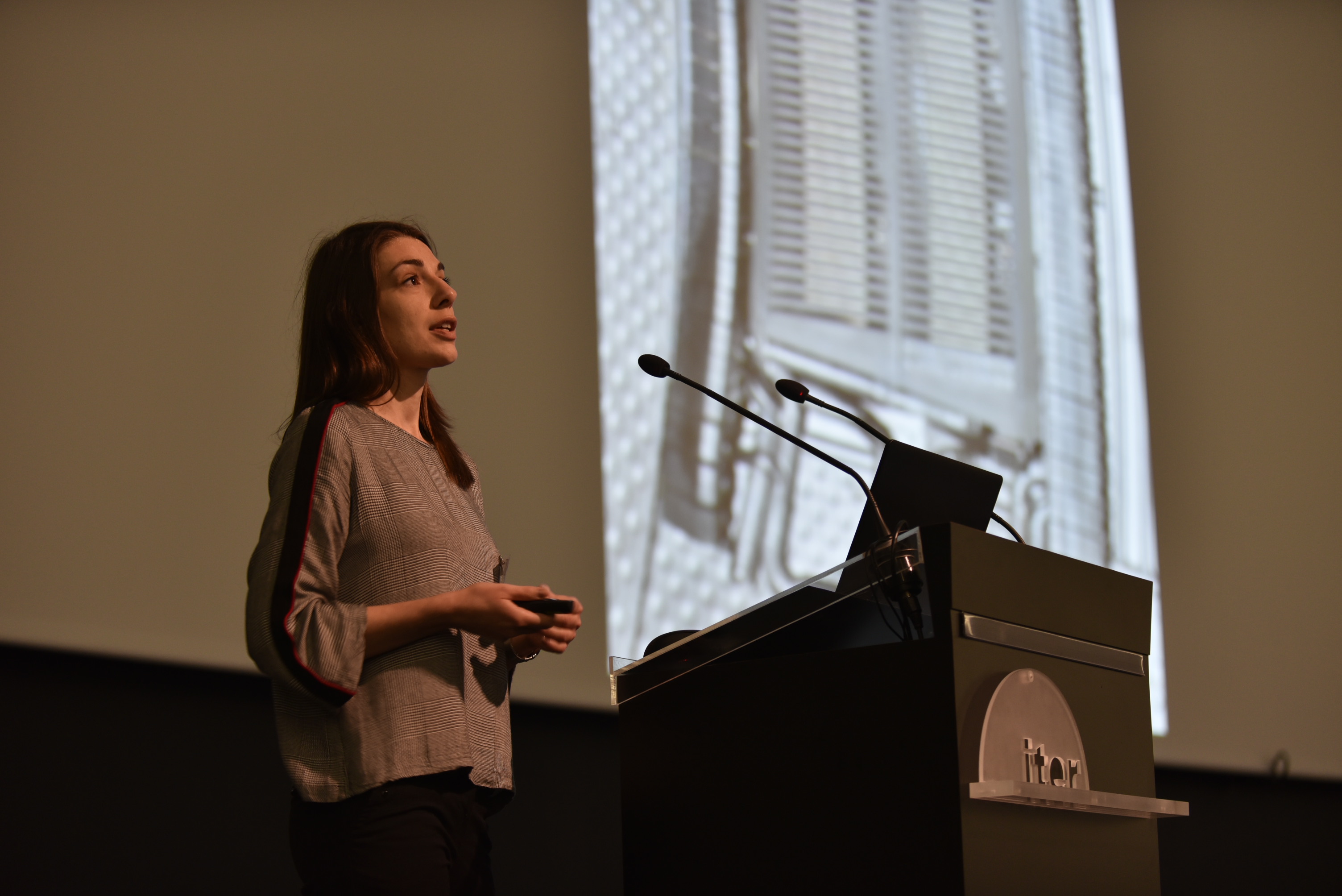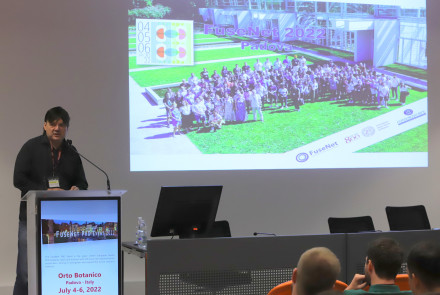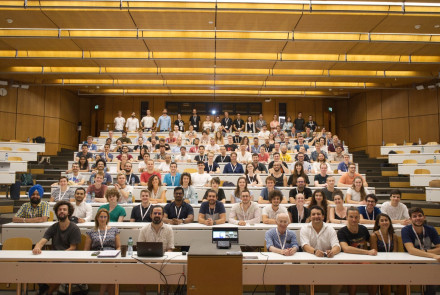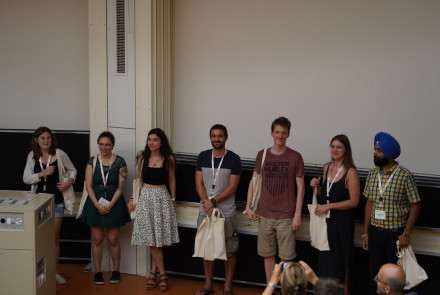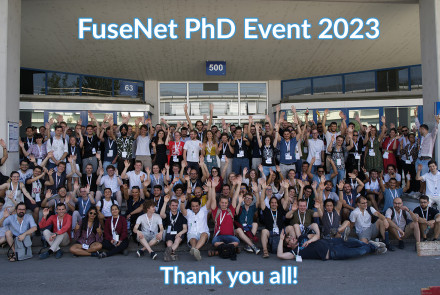"Practice to oblivion!" -- tips from 2018 Pecha Kucha winner, Ana Kostic
It was a spark during a physics lecture at her bachelor college that ignited her interest in nuclear fusion. Since then, Ana Kostic, born and raised in Serbia, has moved across Europe in pursuit of her fusion career, an effort in which she hopes to inspire also the younger generation to find their calling. Last year during the FuseNet PhD Event at ITER she was awarded first for the Pecha Kucha competition. As this year's PhD Event in Padua will host a similar occasion, we thought it to be a good idea to discover her secrets to a successful Pecha Kucha talk.
For those who aren’t familiar with the concept, Pecha Kucha is a presentation format that allows you present 20 slides in exactly 6 minutes and 40 seconds – that’s 20 seconds per slide. With only one image per slide, the concept’s creators – two architects from Tokyo, Japan – force you to be creative in the way you try to bring your story across. Though the concept sounds simple, its execution can be troublesome, especially when you have a lot to tell and show your audience.
Within FuseNet, you are most famous of winning last year’s Pecha Kucha award on the PhD-Event at ITER, so I’m curious, what is the most important thing to consider when preparing a Pecha Kucha presentation?
During the considerable amount of years you’ve spend studying, it’s likely that the communication of information happened mostly through lectures and presentations. In any case, the goal of these latter methods is to teach you a certain thing rather than inform you about it. According to Ana, awareness about this fact is vital when you prepare your presentation, as unlike the university lectures you’ve experienced, with Pecha Kucha “there is not enough time to teach anybody anything”. This might feel odd at first, but it’s important to set the aim of your presentation to informing rather than teaching.
Besides that, Ana underscores how important it is to stick to the rules. “you have 20 seconds, so either have something to tell – and support it with visuals – or give your audience something to read. Don’t try to do both because it won’t work out”. If you chose to go for the narrative-visual combination – which, by-the-way, is the most common and advisable strategy in the Pecha Kucha format – make sure your imagery is at least somehow related to the story you tell.
Alright, but what bout the content, what should and what shouldn’t you present?
Here, Ana tells us, finding the right balance is the key to success. “It’s likely that you won’t have time to inform your peers about the research project in its entirety, so delimit your story to what you think is most interesting to share.” Furthermore “try to keep it simple with the physics level at a low”. Be careful though, because you don’t want to dumb-down your audience in the process of doing so. Lastly, in your narrative or visual aid, you should aim to be a little humorous without overdoing it.
That sounds like a lot to consider, how did you manage to incorporate all this, did you have a recipe?
“I started in keynote with 20 blank slides, writing a single keyword on each.” From this foundation, Ana wrote a short paragraph concerning each of the keywords in her notebook. With a rough idea about what the narrative of each slide would be, she looked around for images that were related to it. This formed the basis of her presentation, 20 images and 20 paragraphs, the next step adding them together to make the story whole.
“For inspiration I looked on the internet for websites and video’s. This is where I found the ideas for suiting colour schemes and a nice design.” Applying them to each of the slides made the presentation a coherent unity rather than a collection of seemingly unrelated parts. She converged the paragraphs so one clear story was formed and later removed unnecessary elements to make it fit the Pecha Kucha pace.
What would be your advice on rehearsing, do you think you should you practice at all?
“Practice to oblivion” Ana laughs, she recalls a quote her promotor Jean-Marie once shared; “The shorter the presentation, the longer you have to practice. I can prepare a one-hour long lecture in a few days, but a 10-minute pitch would take me much longer”. “If you have 20 seconds, you sneeze - it’s out, your slide is running away!”. To ensure that your narrative fits perfectly the velocity of the slides, being able to dream it is no supplementary feature but more of a requirement instead.
Are there any other tips you have for this year’s contestants?
“Oh yes, I have one absolute tip!” she exclaims. “No matter how interesting it may look like, try not to use GIFS, videos or sounds. If something doesn’t go as planned you get distracted, there is no time for that.” A video that starts a few seconds late throws off the entire planning for the rest of your slide-deck, it’s a risk you shouldn’t be willing to take in a schedule as tight as this. On a last note she adds on the Pecha Kucha concept: “It’s a place to explore creativity, something playful or new, it should not look like a standard PowerPoint presentation”.
Something else our readers would like to know; will you be defending you position on this year’s event?
“Unfortunately not, I am currently thesising, I really have to focus on that.” She laughs.

